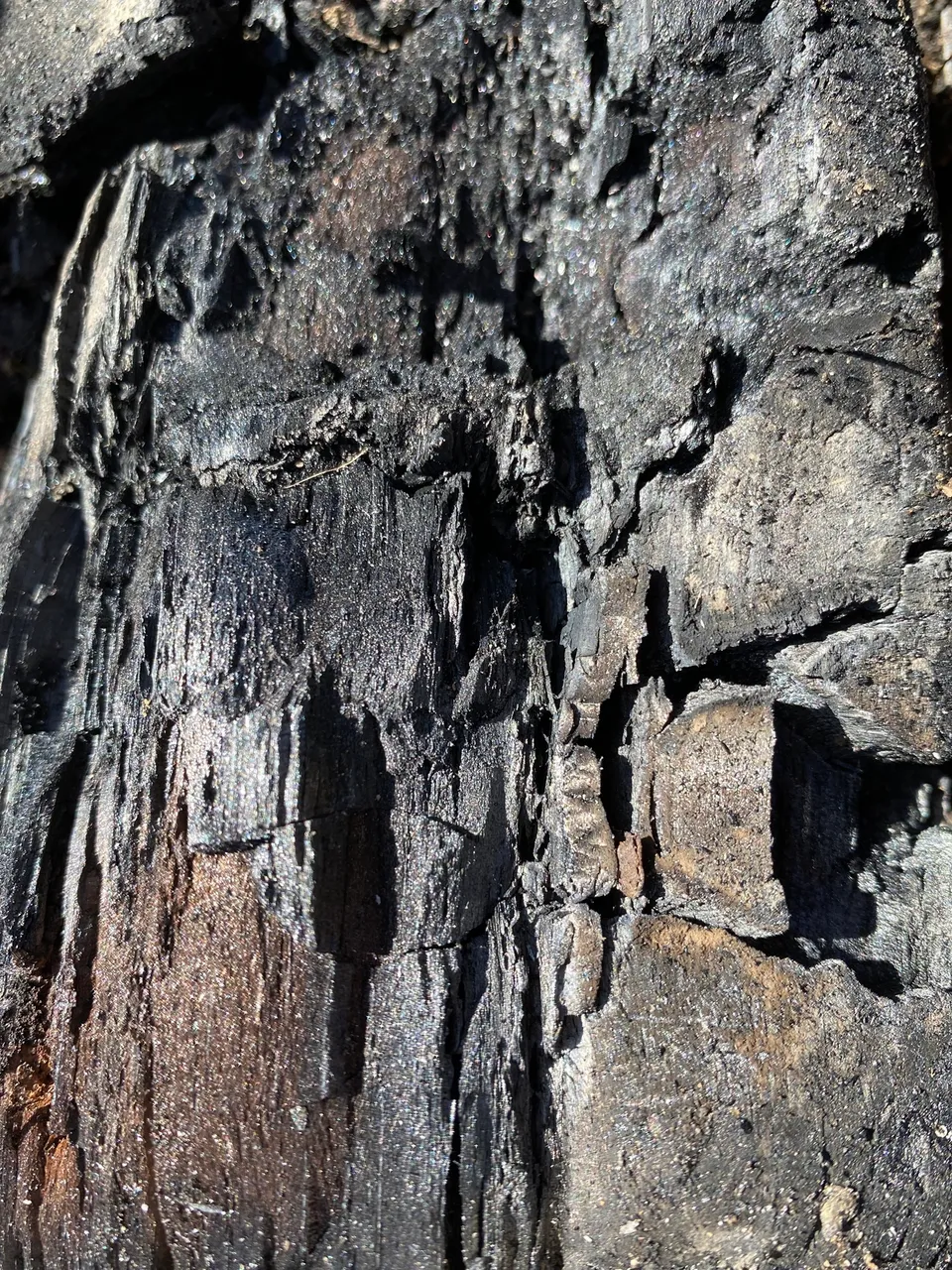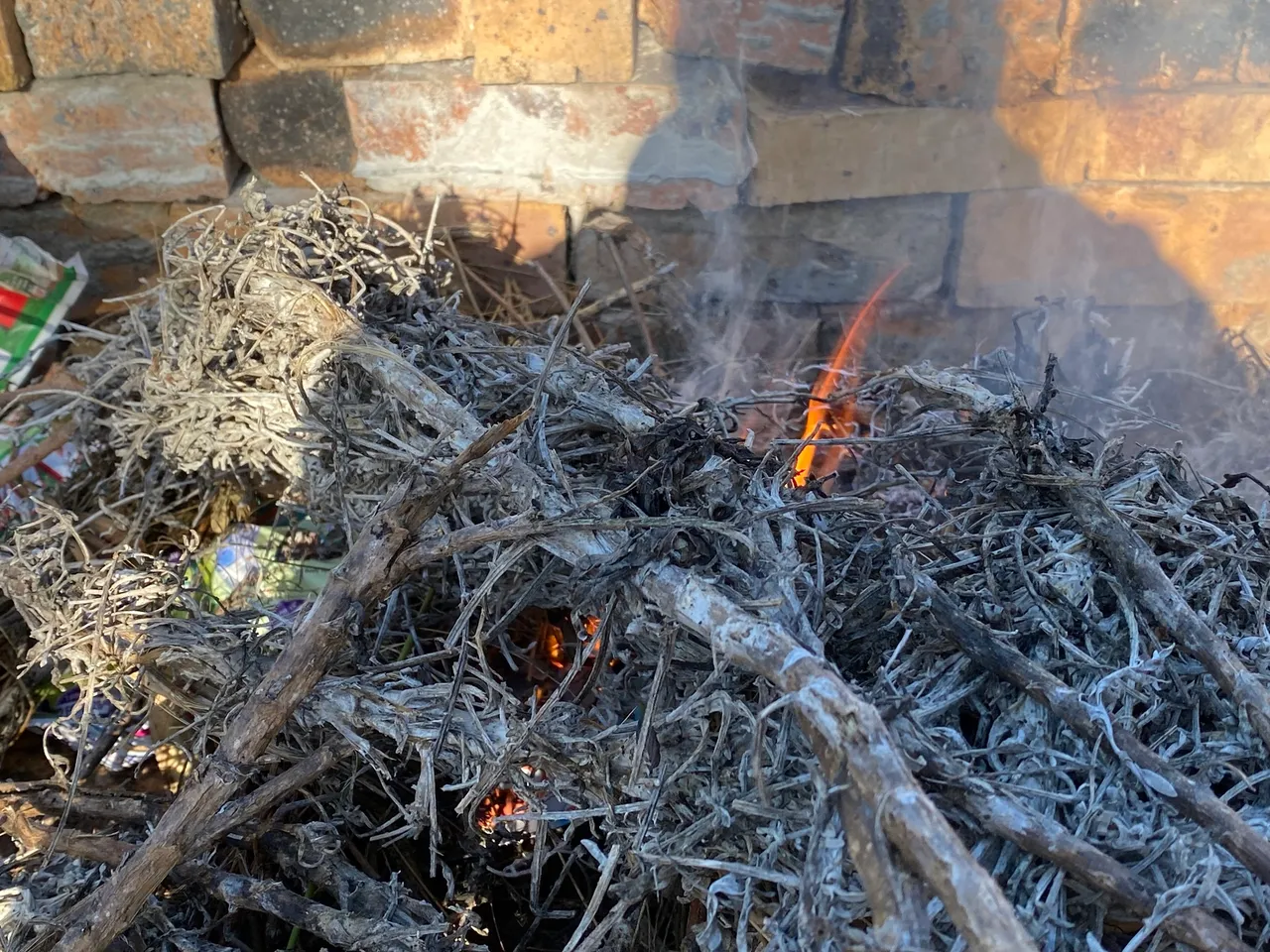
Burning wood and other related material have been with humans for thousands of years. All around the world, people burn wood and other organic materials to cook, for heat and so many other reasons. The "waste products" of burning organic materials are ash and charcoal. Most people will throw it away, but these two things are so valuable for the compost!
In this HiveGarden Journal post, I will share with you my process of making charcoal and ash for the garden. I have various garden scraps that I collect throughout the year to use either for cooking purposes or for composting. Palm fronds are a hassle, but please read on to see what I do with this potentially valuable resource. I will also write about the benefits charcoal and ash can have for your compost and garden!
Charcoal and Ash

It might help to first distinguish between charcoal and ash and the different roles they play in composting.
Charcoal is essentially wood or organic material that did not burn completely. More essential, it is wood or organic material that burnt without enough oxygen or in the almost complete absence of oxygen.
If you have ever held a piece of charcoal in your hand, you would have felt how much lighter it is compared to the original piece of wood. You will also have noticed if you looked carefully enough what seems like thousands of little chambers. This is very important. Everyone is familiar with activated charcoal one can use for filtering water. I think a lot of school children have done the experiment in which you make your own filter. The connotation here is that charcoal can thus absorb "bad things" so that we can drink water. However, and more importantly, it can also absorb good things from the compost to slowly release it into your garden over time. But more on this below.

Ash, on the other hand, is when a fire burns through most of the material. Rather than leaving behind black charcoal, what remains is merely white, well, ash. Consisting of mostly calcium, ash can be an important addition to your compost.
An interesting study which is unfortunately behind a paywall, recommends ash and charcoal as ways of controlling odor. However, if your compost is smelling bad, then you might have done something wrong!
To sum up, charcoal and ash are valuable sources for the garden, so do not throw them away. There is a myriad of other things you can use these products for as well. From lowering the acidity of your ground, to chasing away pests like slugs. However, the reason I use ash and charcoal in my garden and compost is for nutrient absorption and the slow release of those nutrients back into the ground.
Making Charcoal and Ash: A Hazardous Event

It goes without saying that fire is always dangerous. But when you utilize it, it can be beneficial. I have many palm trees around the yard and they produce vast amounts of material. As mentioned in previous posts, I usually burn them to either start my fire or to warm up my pizza oven. But not everything can go into the pizza oven or be used to start my other fires.
If you have ever tried to burn a palm frond, you will know how violent they burn. It is an almost immediate release of energy and heat, and if you are not careful, you will burn. (See the video below). As you can see above, I had some work to do, as there was so much material! I cannot compost them, I tried and it doesn't work, I do not want to dump them in the landfill, so my next best option was to burn it all for the charcoal and ash!
Firstly, I made an altar of sorts. I built it using bricks I found in the yard, with a layer of sand on the bottom to protect the driveway.

I started a small fire which I kept going with some newspapers.

In another post, I shared the sad demise of one of my Caprian cornflower (Centaurea gymnocarpa) plants. It produces a lot of thickish wood. Here you can see I burnt the last of them for some charcoal and ash.

There is just something majestic about burning things. I know that this probably produces a lot of Co2 gas and other things, but the alternative is to let it rot in a landfill. There are many stats that show how bad even organic material is that rot in the landfill, so it is probably better to burn the material and compost the ash and charcoal.

I also had some scrap wood lying around from old compost heaps. I saw the opportunity to turn them into charcoal as well.
The Most Important Step
Charcoal, as noted above, is the incomplete burning of wood and other materials. Palm fronds burn out quickly, but the stems of the fronds burn slower.
The trick to making charcoal is to not let the fire burn everything.
One way of stopping this is by piling more and more material on top of each other before they burn completely. Because I had so much material this was easy.

Once everything was burnt but not burnt out completely, I filled the makeshift altar with ground and some new compost. It smothered the fire. Just for safety measures, I also poured some water over everything. I left it to cool for two days before I placed everything in buckets.

I made seven or so buckets full of charcoal and ash. Obviously, not everything got burnt to charcoal or ash, but most did. And some of the material is sand, compost, and ground I used to cover the paving and to kill the fire. But I think I did a good job!
Postscriptum, or Terra Preta in the Backyard

If you have never heard of Terra Preta do yourself a favor and read the Wikipedia page on it. I am going to oversimplify it, but it is basically a very rich type of soil ancient peoples used which after thousands of years are still very nutrient dense. One of the many other reasons for this is the high charcoal content in the ground. As mentioned above, the charcoal absorbs the nutrients of the compost and slowly releases it.
I am not 100% trying to replicate this, but the theory is interesting and I always add a lot of charcoal to my compost. Maybe I am forming a small type of terra preta in my backyard.
I hope you learned something from this post. Fire is dangerous and burning palm fronds in the open is probably not legal in a lot of countries. (I have seen that open fires in some countries as not legal, so make sure about these laws before you burn!)
The photographs and video are my own, taken with my iPhone. Sources in this post are credited (via hyperlinks). My own musings are interspersed. Life is short, have fun! Happy gardening and stay safe.

